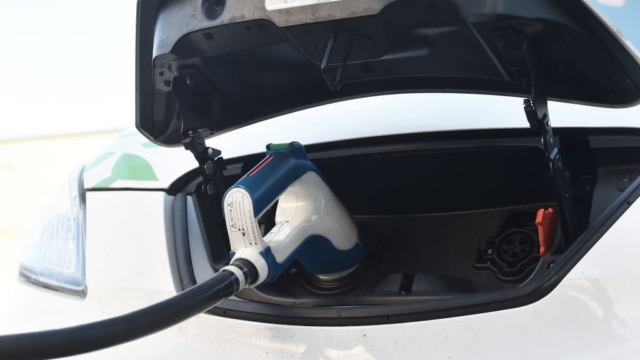Read The Full Article On: Inews
A ‘green recovery’, ‘building back better’, and ‘going green’ are very much on-trend at the moment. But discussions around the increased costs to consumers that these will inevitably incur, particularly those on lower incomes, are less frequent. For instance, buying an electric vehicle is still typically going to cost you a lot more upfront than the fossil fuel alternative.
Later this year, the Government is set to unveil the Transport Decarbonisation Plan, outlining the next steps to reducing emissions from the transport sector. As the largest emitting sector of the UK economy, and with over half of transport emissions coming from cars, the Government’s plan will likely detail how it intends to mature the market for electric vehicles (EVs). It has also been reported, by the Financial Times, that the Government will announce that the current 2040 ban on the sale of any new petrol and diesel vehicles is to be brought forward to 2030.
i’s opinion newsletter: talking points from today

The benefits of going electric are clear. EVs are much cheaper to run overall than petrol or diesel vehicles, despite the higher upfront price. They have lower maintenance costs and they do not attract taxes such as Vehicle Excise Duty nor charges from Clean Air Zones.
But to enjoy the perks of EV ownership, you have to be able to afford one. The Government has made an effort to address this through the Plug-in Car Grant, offering £3,000 off of the price of new EVs. But even when this is factored in, there still remains a yawning price gap between conventional petrol and diesel vehicles and their electric counterparts.
For those wanting to buy the electric model of the popular Vauxhall Corsa, it will cost you £11,250 more than its petrol equivalent. The Hyundai Kona Electric is £14,261 dearer than the petrol model. And if you were thinking of purchasing the electric Peugeot e-2008 over the petrol edition, be prepared to pay an additional £11,475. Comparisons aside, the cheapest EV on the market today, the smart EQ fortwo, still comes with a price tag of £20,000. Unsurprisingly, recent pollingconducted by SMMT in August showed that the number one reason for not purchasing an EV was their high upfront prices.
The higher upfront prices of EVs is driven, in large part, by the cost of the lithium-ion batteries equipped to power them. However, with predictionsshowing the cost of these batteries continuing to tumble over the coming decade, forecasts are pointing to the mid-2020s as the moment that EVs will reach price parity with petrol and diesel vehicles. Nonetheless, this is still some time to wait and is little comfort to low income households, which typically buy cars from the second hand market anyway.
Neither does the second hand market offer much in the way of cheap EVs. A quick search across popular second hand car sales websites will reveal that second hand EVs selling for less than £4,000 are few and far between; a stark contrast to the thousands of petrol and diesel vehicles being advertised for less than £1,000. Evidently, more EVs must come on to the second hand market to bring down their price and make EV ownership more accessible for lower income households.
Aside from measures to increase the sales of EVs more broadly, fleet vehicles (company cars) would be a good place to start in growing the number of EVs on the second hand market, as they are replaced on average every 3.9 years. So far this year, fleet vehicles have made up over half of all new vehicle registrations in the UK.

Benefit-in-kind taxation – otherwise known as the Company Car Tax – can be used to encourage EV uptake in the private fleet sector. Reassuringly, the Government has already demonstrated that it recognises the role of the fleet sector in growing the prevalence of EVs on our roads. In July last year, the Government announced that company car drivers would pay no benefit-in-kind tax in the 2020-2021 tax year if they drove a zero emission vehicle, incentivising their uptake across private fleets. The benefit-in-kind tax rate for EVs will increase to one per cent in 2021-2022 and two per cent in 2022-2023.
There are approximately 25,000 central government fleet vehicles, and 50,000 vehicles managed by local councils. The Government has previously signalled that it intends to have a fully electric fleet by 2030. But it will take years after that for these vehicles to trickle down into the second hand market. The Government and local councils need to be more ambitious, seeking to have 100 per cent of their fleet electric as soon as possible.
The Government’s course of action on EVs will become clearer in the coming days and weeks. However, as with a lot of green policy, there is a risk that those less well-off may be overlooked. The second hand EV market needs to be grown – with the key to this lying in the electrification of the fleet sector – so that we take households of all incomes on our journey to decarbonised road transport and net zero.

